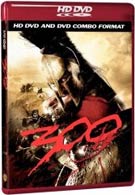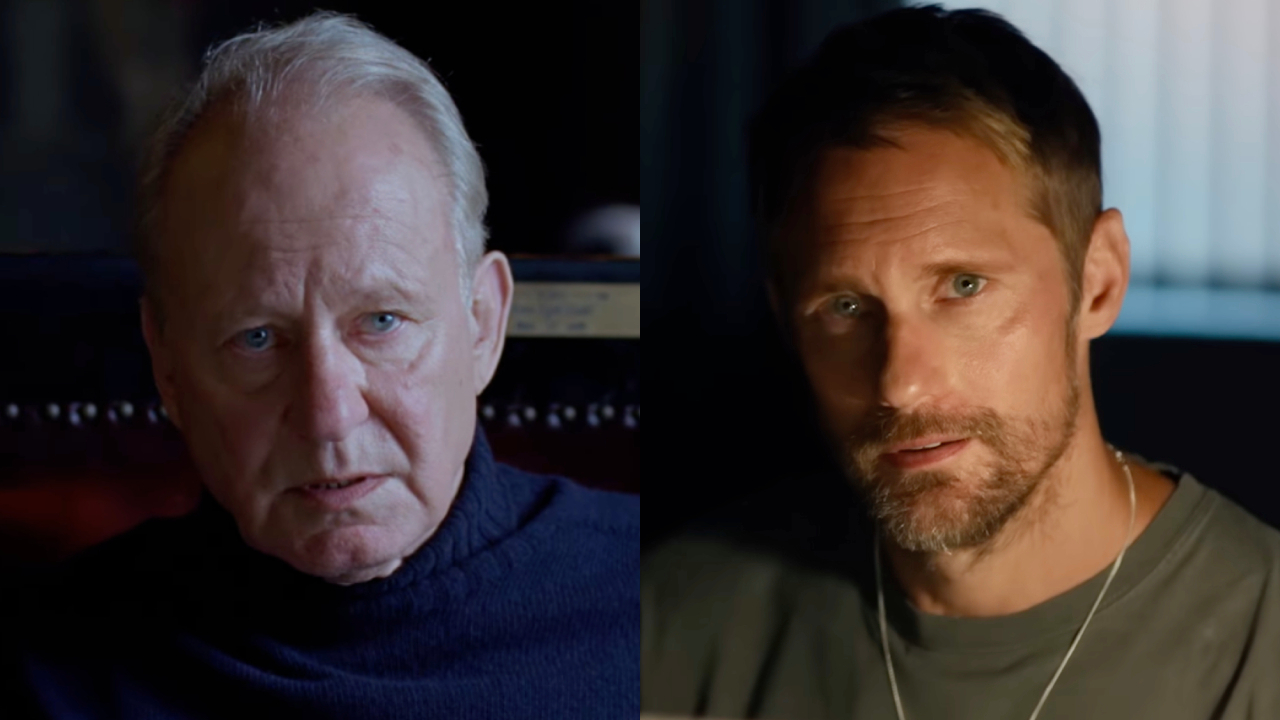While superhero movies like X-Men and Batman have been adapting comic book material for years, Sin City showed filmmakers a new way to do it. One might even call it, “adapting comics to movies the Frank Miller way.” The heavily stylized format paid tribute to Miller’s visual style while also creating a noir style for the new millennium. Now 300 uses a similar visual style to adapt another Miller tale: that of the epic battle between 300 Spartan warriors against an army of Persian forces at the Battle of Thermopylae. 300 is another one of those movies that has completely changed my reaction to the film over subsequent viewings. I initially felt the heavily-stylized approach to the movie wasn’t really as required for a true adaptation as it was for Sin City. For the previous movie, the visual style not only brought Miller’s work to life, but it also worked as an extension of the film’s noir genre, which is already dark and shadowy. Zach Snyder’s sepia approach to 300 felt unnecessary and, while visually stunning, I didn’t wonder if it was more gimmick than tool.
Seeing the film again I feel like my initial reaction was wrong. 300 is not a historical piece, even if the battle of Thermopylae is a historical event. This is an artistic depiction of those events, based on how Frank Miller chose to create them. In that case, the visual presentation is not only fully justified, it’s necessary as it completes the artistic vision just as much as the inclusion of the monstrous beasts with swords for arms that couldn’t possibly have existed at that time or the inaccurate fighting styles. That same artistry is the movie’s primary excuse against the claims of racism some have chosen to beleaguer the movie with.
Politics and artistry aside, the movie is more than just a visually stunning picture. There is some great depth here to be found in the characters, whether it’s the soulful narrative that unfolds the story by David Wenham’s bardic Dilios or the bureaucratic slime of Dominic West’s crooked senator Theron. The true heart of the story lies between the leader of the Spartan warriors, King Leonidas (Gerard Butler) and his queen, Gorgo (Lena Headey). Although their screen time together is limited, the love the two share dictates almost every action their characters do, from Leonidas leading his men to battle to protect Sparta and his queen, to Gorgo taking extreme measures in order to rally support for her king’s sacrifice. The visual style of the movie may mask their expressions in shadow frequently, but the depth of these characters can’t be hidden away. They’re just too strong.
With all of that praise, there are a couple of complaints I have that have remained through multiple viewings. The biggest, of course, is the emphasis put on the value of the Spartan’s phalanx maneuver. The concept is sound and definitely a needed method of defense – protecting each other in battle. However, Leonidas uses the maneuver as an excuse to turn out the deformed Ephialtes (Andrew Tiernan) who can’t lift a shield. That’s right, the army of 300, going up against thousands, turns down the help of one person. That wouldn’t be so bad if they used the phalanx maneuver beyond the first battle, but after the initial conflict the Spartans start pretty much fighting mano-y-mano, without any kind of solid defense from their kinsmen; a kind of comitatus while it’s convenient, and then gone when the camera work needs to get more interesting.
Zack Snyder is able to play on both the visually impressive ideas created by Frank Miller, as well as drawing an emotional depth to these characters. If the story isn’t exactly consistent all the time it’s a minor quip and one that doesn’t detract much from the story. That makes me absolutely confident that he’s the right man for the job for Watchmen, which is a good thing. He’s going to be taking all of comic book fandom’s favorite story in his hands with that one. Much like the Spartan warriors, he should celebrate this victory, however, before building back up for the battle ahead. If you’ve been looking for that quintessential HD DVD release that really showcases everything the high definition format can offer, this is it. The 300 HD DVD release utilizes just about every aspect of HD DVD technology, including a few new things I haven’t even gotten to test out yet.
First off, the high definition detail is perfect on this movie. Zach Snyder fills the screen with all sorts of details, from the shadowy faces and rippling muscles of his actors to debris and particles floating in the air. Every single element is crystal clear with no visible artifacting at all. If HD DVD is the look and sound of perfect, this movie showcases that perfection perfectly.
The HD DVD release of the movie carries a couple of bonus features that aren’t available on other formats. The first is a set top game titled “Vengeance and Valor.” Unlike other set top games, which typically just play on reflexes, this is a sort of simple strategy game. You have the Spartan forces at your command against Xerxes’s army. You move your forces into different places, using strategic advantages to defeat the larger numbers. There’s actually a little bit of brain power needed to defeat the Persians and I’m afraid to admit I haven’t mastered the game yet after a couple of rounds.
Your Daily Blend of Entertainment News
The biggest difference between the HD DVD release and the other formats is the picture in picture commentary, which features director Zack Snyder discussing the visual style of the film and the approach to that style while an unprocessed version of the film plays in the picture in picture frame. The unprocessed version is an entirely different version of the movie. Not only does it lack any composite effects (of which there are many) but it also doesn’t have the crush added in that creates the style of a graphic novel brought to life. It’s interesting to see just how different this movie could have been and how much of the visual style had to be planned out far in advance of shooting in order to create the right effects. Far too often we see five minute featurettes on how effects are created, but watching the original footage of the movie compared to the final cut is a real eye opener on what “having a vision” for a picture truly means.
Finally, truly putting this disc on the cutting edge of HD DVD technology, the disc utilizes the HD DVD player’s networking ability to allow users to assemble their favorite clips from the movie into their own montages that can be uploaded for others to view. They can also purchase exclusive wallpapers and ring tones using the disc’s connection to its home site as well. This is pretty much uncharted territory for HD DVD players – so much so that I hadn’t connected my player to a network for anything other than a firmware upgrade. It’ll be interesting to see how other discs utilize these ideas in the future.
Other bonus material is shared with some of the other formats (Blu-ray or 2-disc special edition DVD). Three minutes of deleted scenes extend Ephialtes’s storyline a bit, showing a suicide attempt after his rejection from Leonidas, and the failure of that attempt. There’s also a very brief sequence with more giants who carry arrow-shooting midgets on their backs. Snyder informs the viewer these were cut because things were really obviously getting too far fetched and out of hand. After seeing the sequence, I have to agree.
There are a half a dozen featurettes (most of them in high definition) on a variety of subjects, from the historical accuracy of the movie to Miller’s own take on the movie and what it looks like. One of the highlights of these featurettes is the original pitch reel created by Snyder to prove his proof of concept and convince the studio he could do this. What’s interesting is that while it’s listed as the pitch reel, it’s actually a featurette that explains the process Snyder had to go through to get this movie green-lit, from a really basic pitch reel using the images of the comic book to the computer generated fight between a Spartan and some Persians that finally got the movie approved. It’s a neat look at his dedication to getting this picture made. None of the featurettes truly delve into the making of the movie (the so called “making of” is actually just an extended commercial), but after the picture-in-picture commentary, it’s not really needed.
Finally, there are the webisodes that appeared online to promote the movie along the way. Lasting about 2-3 minutes and not presented in high definition, these are probably the weakest offerings the HD DVD disc contains. Again, they aren’t really that essential anyway, because the content is found better elsewhere and these were more of a promotional tool anyway.
This HD DVD release epitomizes the slogan of the format; this movie is the look and sound of perfect, on top of which I’ll add the feel of perfect. The disc doesn’t leave me wanting in any way. From the movie itself to behind the scenes material, this release is fully loaded. The fact that it’s a combo disc, thereby playable on a standard DVD player as well, is just icing on the cake (It also provides the one thing the HD DVD format is missing – the standard commentary by Snyder, writer Kurt Johnstad, and D.P. Larry Fong). For every format there’s a release that comes out that truly defines the format. For now (and probably for some time) 300 is the pinnacle of accomplishment on HD DVD.

